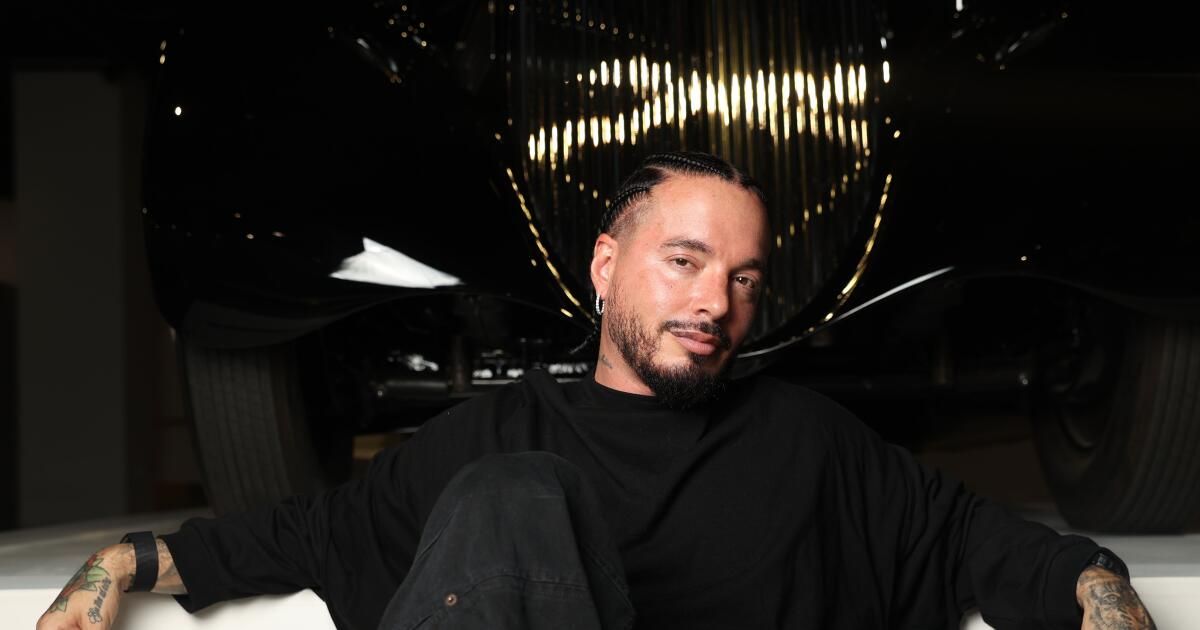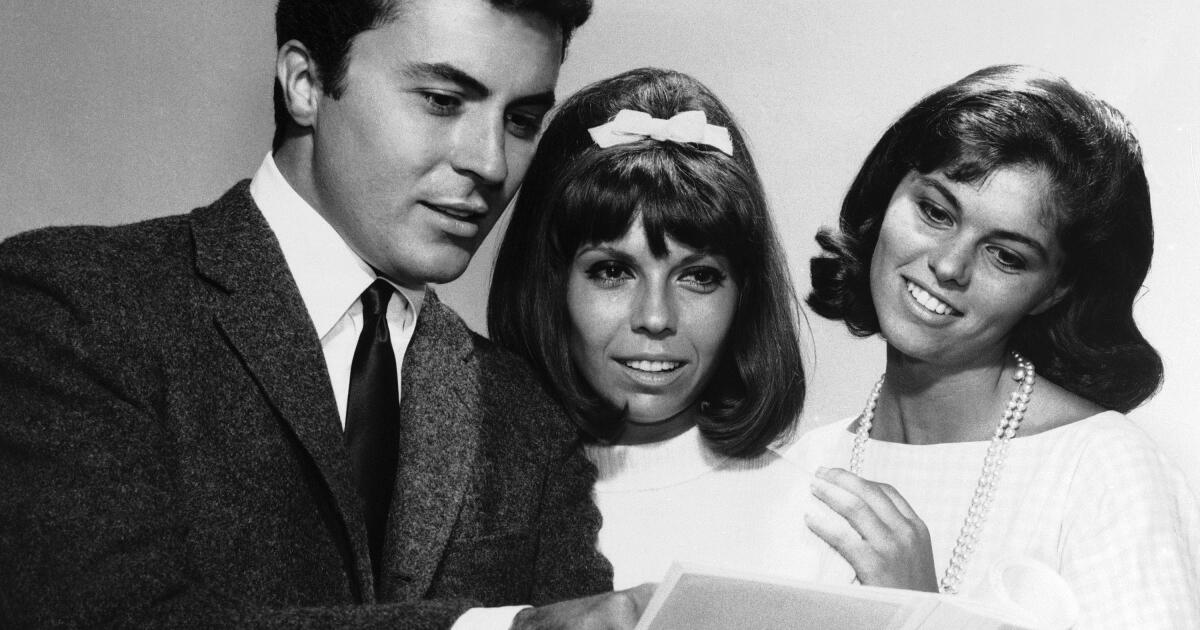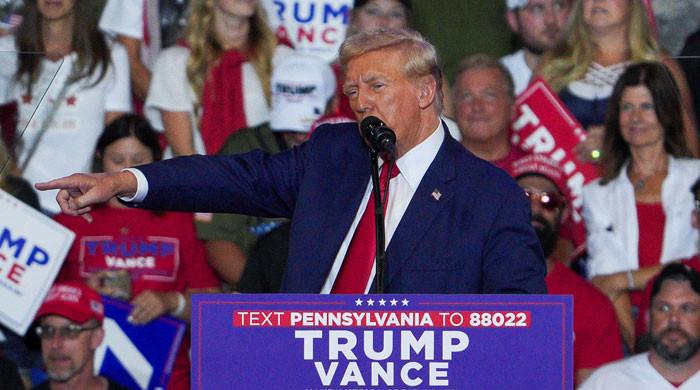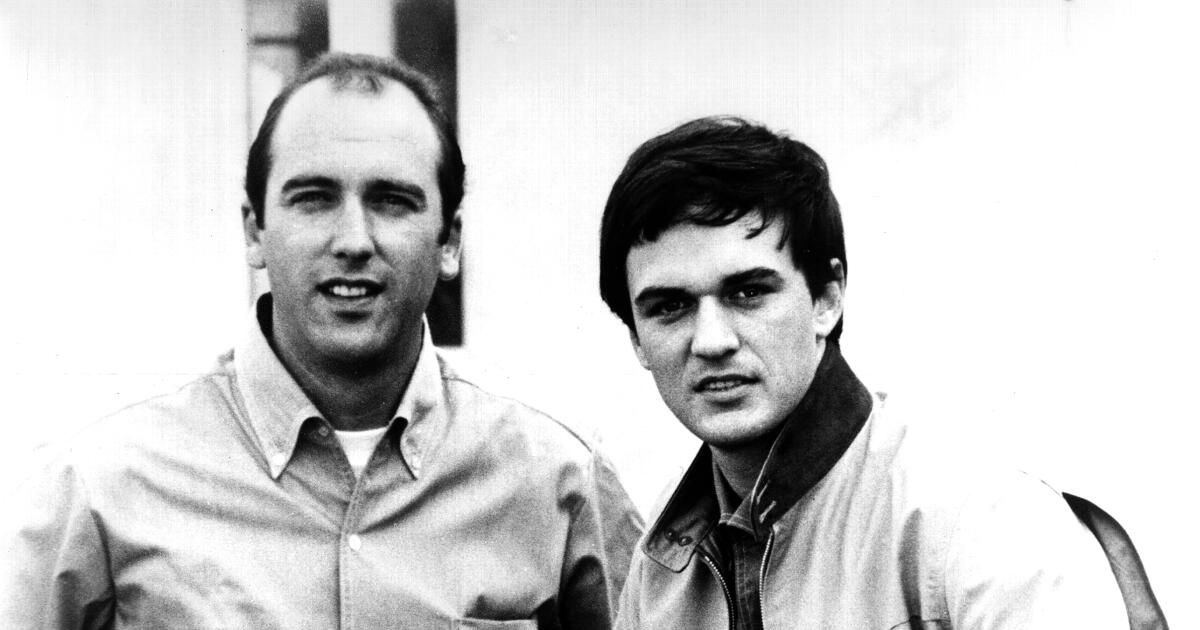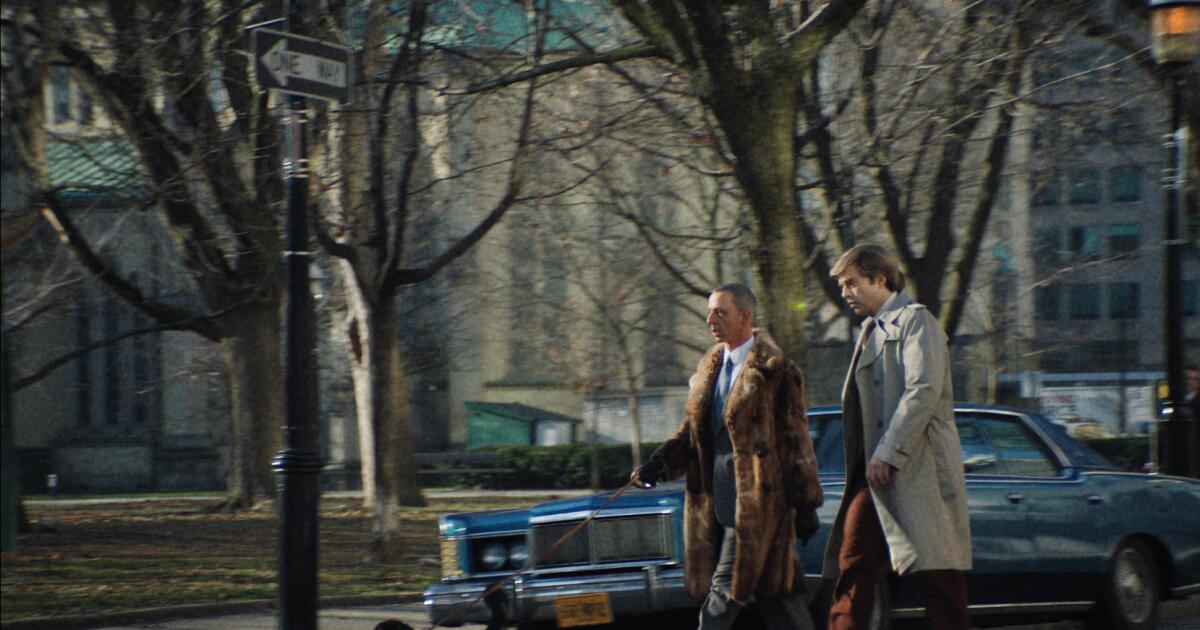José Balvin remembers being 17 years old when he saw an ad for a used 1997 Volkswagen Golf in the local paper. With dreams of touring Colombia singing reggaeton and selling CDs out of a trunk, he felt like all he needed to make those dreams come true was this car.
“I didn’t have any money and my dad was also broke, but he knew that I really loved it and he knew what my purpose was with this,” Balvin said.
The vehicle, which he affectionately christened Rayo, took the young singer to every city in Colombia that was willing to give him a chance. Now, seven albums and six Latin Grammys later, the 39-year-old “Prince of Reggaeton” returns to his first car as the main source of inspiration behind his new project, “Rayo.”
J Balvin poses at the Petersen Automotive Museum in Los Angeles.
(Michael Blackshire/Los Angeles Times)
At the request of the singer’s team, I meet the “Mi Gente” singer at the Petersen Automotive Museum. Gleaming lowriders fill the lobby while high-end sports cars from the past and prototypes of the future fill its four floors to the brim. Inside, J Balvin spots the museum’s “crown jewel,” a 1925 Rolls-Royce Phantom, and behind his flashy chrome sunglasses, his eyes widen. The glassy black car with a seductive red interior exudes the feeling of true luxury, something the singer has grown accustomed to. Dubbed by the museum as “the rarest Rolls-Royce in existence,” the classic vehicle is circled by Balvin, who takes in every little detail, from its circular doors to its reflective grille. The same teenager who was excited by a newspaper ad emerges, playfully insisting that it’s the only car he wants to be photographed with.
As he continues to circle the Rolls-Royce, his silver accessories — a lower teeth grill and shiny Jordan sneakers — glisten beneath his all-black outfit. His outfit aligns with the vision of “Lightning”: His album cover features a luxurious-looking metallic version of his Volkswagen with scissor doors.
A unifying symbol of the singer’s beginnings and the life he leads today, his seventh studio album attempts to bring these two versions of Balvin together sonically. Turning toward the pure reggaeton sounds around which he has built his legacy, “Rayo” assesses how Balvin can distinguish himself in today’s Latin music scene.
The world was first introduced to J Balvin with his debut studio album, “Mi Familia.” The 2013 release helped popularize the then-fresh mix of reggaeton with hip-hop beats and club-style grooves. Consistent hits like his first No. 1 on Billboard’s Latin Airplay, “6 AM,” and “Ay Vamos,” the first video to reach 1 billion views on YouTube by a “Latin urban/reggaeton artist,” placed him at the forefront of the genre at the time.
By the late 2010s, his reach expanded beyond the Latin market. With the release of “Mi Gente” in 2017, Balvin became the first entirely Spanish-language song to top Spotify’s global chart, eventually earning a remix featuring Beyoncé. With frequent collaborations with other high-profile artists such as Cardi B, Bad Bunny, and Rosalía, he dethroned Drake as Spotify’s most-streamed artist worldwide in 2018. To this day, he still holds the title of Spotify’s second most-streamed Latin artist in the world, behind Bad Bunny.
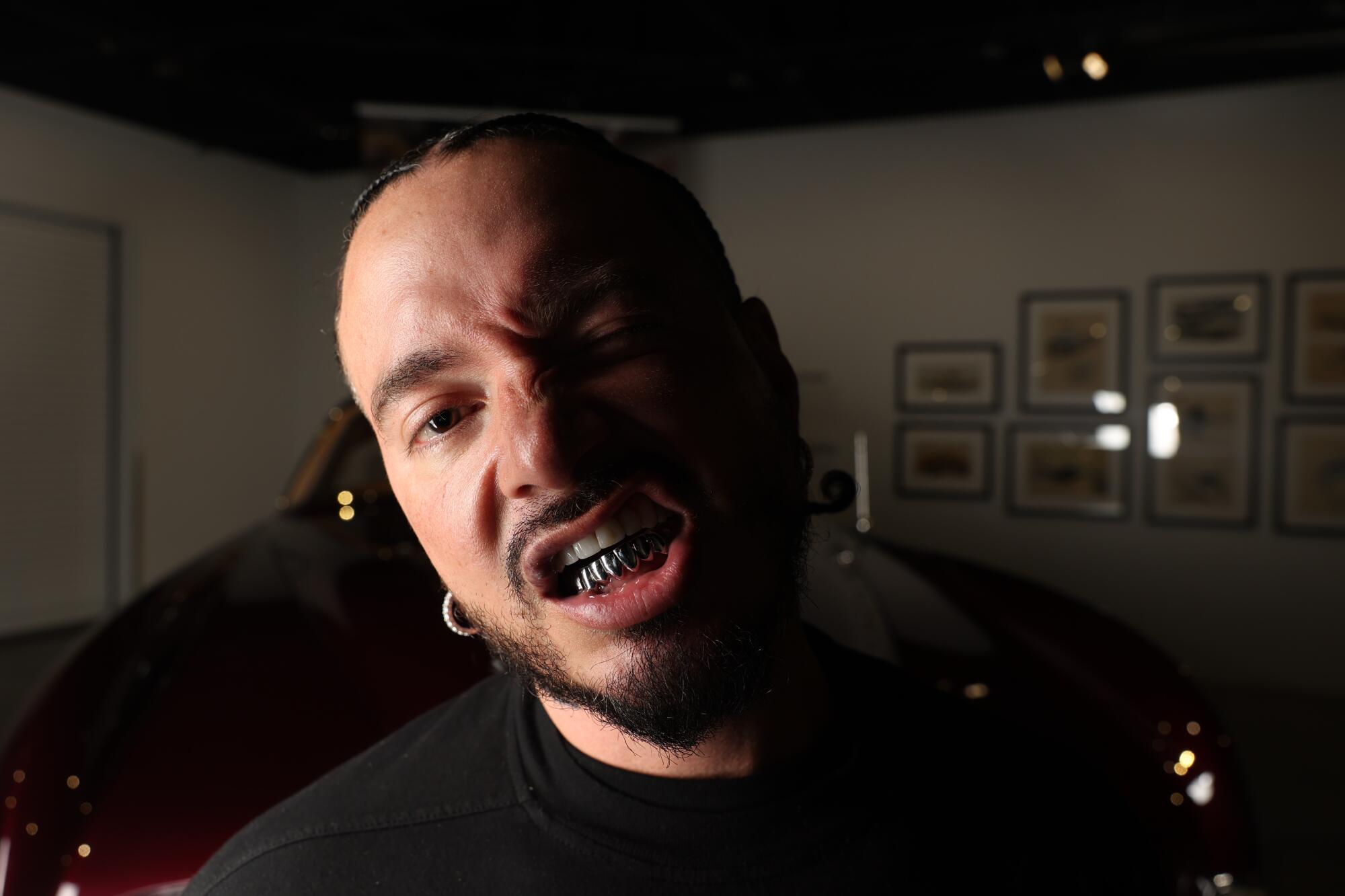
J Balvin shows off his silver grill.
(Michael Blackshire/Los Angeles Times)
By the time he released his sixth album, “José,” in 2021, his reputation began to crumble. He became the subject of several controversies: a multi-layered industry feud with Puerto Rican rapper Residente; the offensive nature of the “Perra” video, which featured black women dressed as dogs on leashes; and his controversial acceptance of the Afro-Latin artist of the year award at the African Entertainment Awards.
Balvin reached a breaking point, not only in his image but also in his sound.
“Once you start doing what people want, you start losing your identity. But I’m not like that,” Balvin said. “I see this point of strength where people want to follow the trend. That’s fine. But what makes me special is myself.”
After ending a 10-year record deal with Universal Music Latino, Balvin signed a new deal with Interscope Capitol in May. Nir Seroussi, executive vice president of Interscope Capitol Labels Group, sees the singer as “an ambassador for Latin music.”
“We all have our ups and downs. Regardless of what has happened, what matters at the end of the day is how you get back up. That has really been my focus.” [with Balvin]“The Jose I know is someone very mature and disciplined. He is like a boxer preparing to step into the ring. He is at the top of his game because of his energy, mental toughness and drive.”
Balvin says his process started to feel “calculated.” When it came to making albums, he often found himself falling into a constant rut.
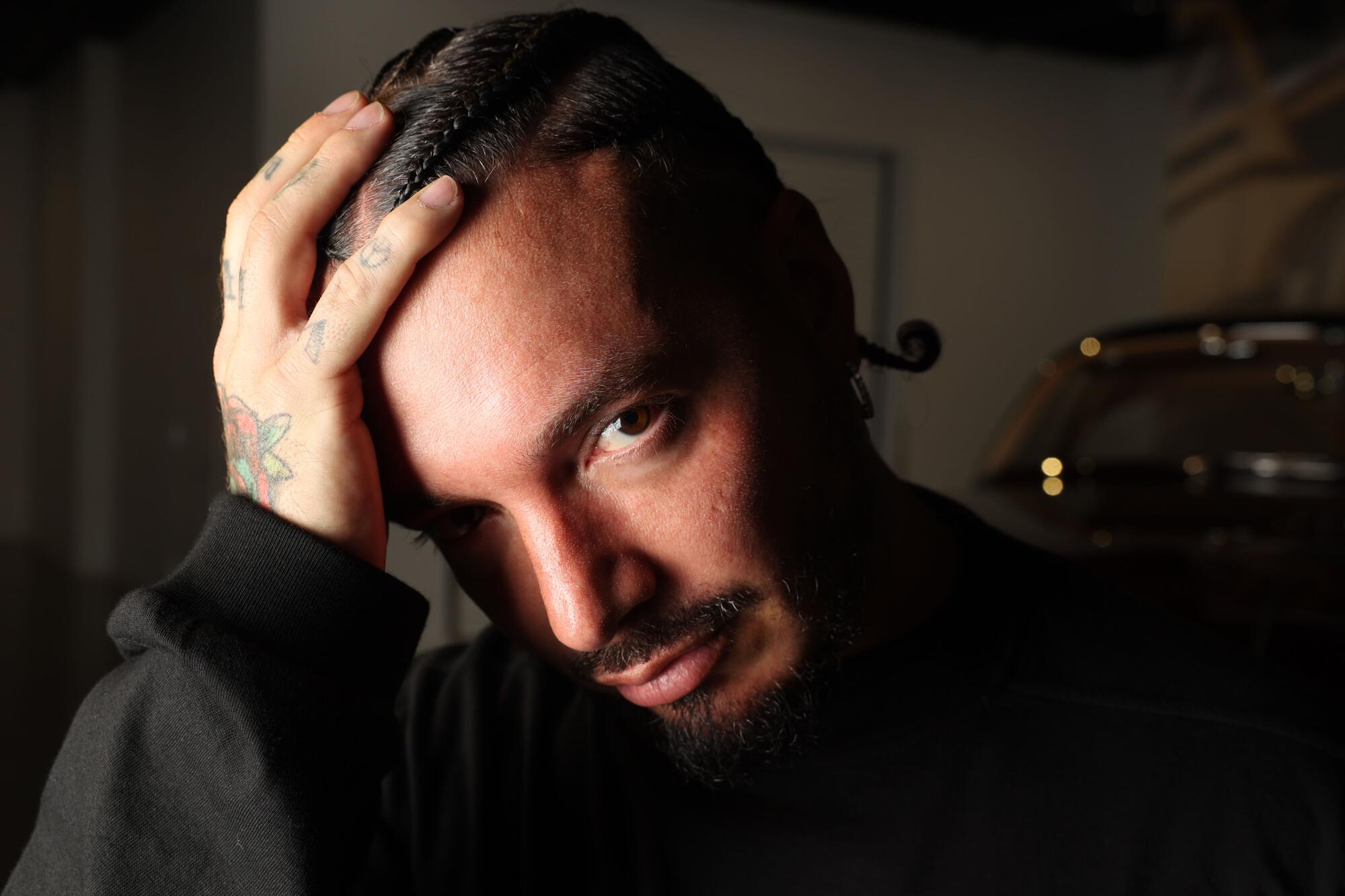
J Balvin poses in front of a 1953 Cadillac Series 62.
(Michael Blackshire/Los Angeles Times)
“We entered [to the studio and] I say, “This is the mission. This is what I want to do.” It works with everyone else. [albums] “What we’ve done, but in this case, it was so pure, so joyful and so real to me,” Balvin said. “This is the most fun I’ve had with an album in a long time.”
With “Rayo” he didn’t enter the studio with any kind of expectations or pressure.
“I just went in and just jammed, like I usually did. I played around with rhythm and melodies. I even did 10 or 20 takes,” he said. “It didn’t matter because we were just having fun. It took me back to the very beginning of my creative process, when it was more about going with the flow.”
His return to a more organic process eventually led him back to his roots in party-focused music.
Rather than blending popular sounds from the early 2000s with reggaeton, as he did on records like “Mi Familia,” he now draws on more current trends in synth pop, EDM and trap beats to create a modern take on J Balvin. On tracks like “Swat,” he pays homage to a more belligerent take on old-school reggaeton, while on “Doblexxó,” which features frequent collaborator and fellow Colombian singer Feid, Balvin mixes an industrial electronic feel with a classic perreo melody.
The album’s biggest risk was “Stoker,” featuring Mexican music singer Carin León. The song begins as a melodic ballad, a rare moment for Balvin. But as the chorus begins, an underlying Afro rhythm becomes the backbone of the song. As he and León pass the baton between their combined individual styles, the musicians seamlessly bridge their worlds of reggaeton and Mexican folk.
“How can we make a song where Carin's fans are happy and where my fans are happy without feeling like J Balvin is a sellout? Personally, I'm not someone who likes to ride the hype because I have a lot of respect for his movement.” [musica Mexicana]“Balvin said in reference to the current popularity of Mexican music. “I wanted to be super cautious in the way we were going to make the song together.”
The two initially connected on this Last year's Coachella Valley Music and Arts Festivalwhere the lineup featured the largest number of Latin music acts ever seen at the desert festival.
“The best thing about the song was the surprise for both of us,” said León. “The nicest thing about collaborating with José is the simplicity with which he approaches things. He always makes room to welcome his friends.”
They began the process by sending each other ideas for potential songs. But upon hearing an unfinished version of “Stoker,” Balvin knew he could add something “really new and special” to the song.
“There’s a fine line between changing something to make it cooler and destroying it,” Balvin said.
When asked if he has ever destroyed any of his songs, he starts laughing and says, “Sometimes I don’t know what’s going on, but I think, ‘What did I do? ’ Most of the time, it’s worth the risk.”
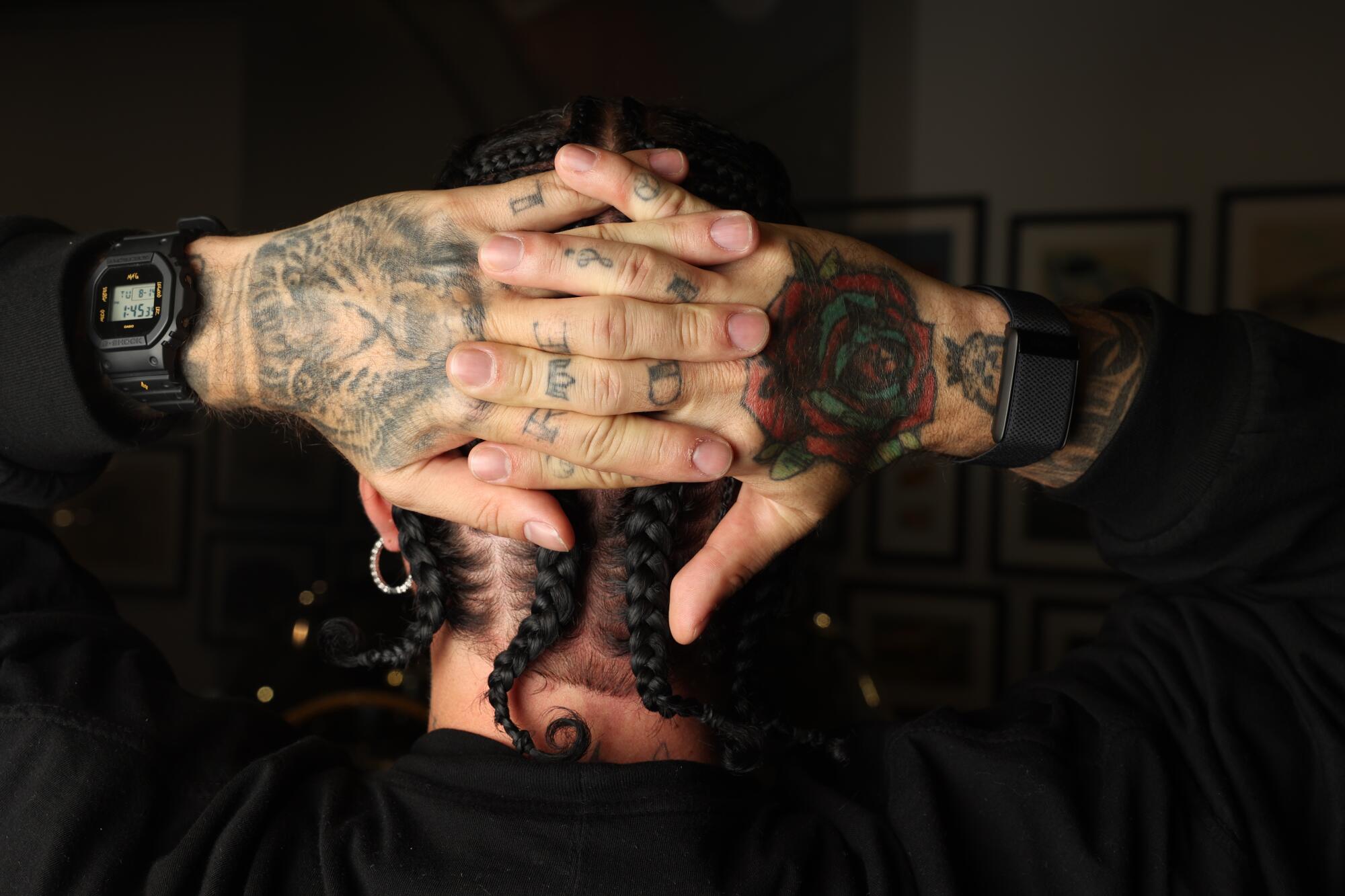
J Balvin shows off his hand tattoos and braids for a portrait.
(Michael Blackshire/Los Angeles Times)
“I am not afraid. I have proof of this in my years of career. We make these changes and we are revolutionary.”
To his credit, the Latin music scene was very different when he started than it is today. He feels “grateful” to have started his career then. In the era of streaming and the current saturation of the genre, he says he is aware of how difficult it is for new artists to distinguish themselves.
One thing she has always been adamant about is singing exclusively in Spanish, refusing the idea of crossing over into the English-speaking market. Now that Latin music is the fastest-growing genre in the U.S., she lets out a smile and says, “I knew it.”
“When I was a kid, I listened to Shakira and Enrique Iglesias and they did the same songs in English. [that they previously released in Spanish]“I respect that because at that time it wasn’t the right time,” Balvin said. “But my language is the way I express myself and the way I express my heart.”
After all these years of J Balvin being hailed as a leader in Latin music, today “Rayo” is seen as one of the many newly released Latin albums. In a genre that is currently booming, his legacy is what he will continue to rely on.
“It’s very gratifying. I feel like I’ve expressed it. I had a vision of what we’re living now,” Balvin said. “We have the doors open and this is the moment we have to say that they’re going to be open forever.”
After a half-hour of Balvin posing with the glamorous Rolls-Royce, his publicist calls it a day. Balvin puts his chrome sunglasses back on and heads for the exit of the exhibit. Too distracted by the endless rows of spectacular vehicles, he forgoes saying goodbye. As his entourage of about 15 people slowly follows behind, one member of the group stops to ask a nearby employee where the Batmobile is kept. After confirming its location on the fourth floor, he rushes to the elevator Balvin was headed for. Despite having a busy day filled with press interviews and business meetings, the “Prince of Reggaeton,” who has the Batman symbol tattooed on his chest, refused to leave the museum before seeing the iconic vehicle featured in Tim Burton’s 1989 superhero film.

